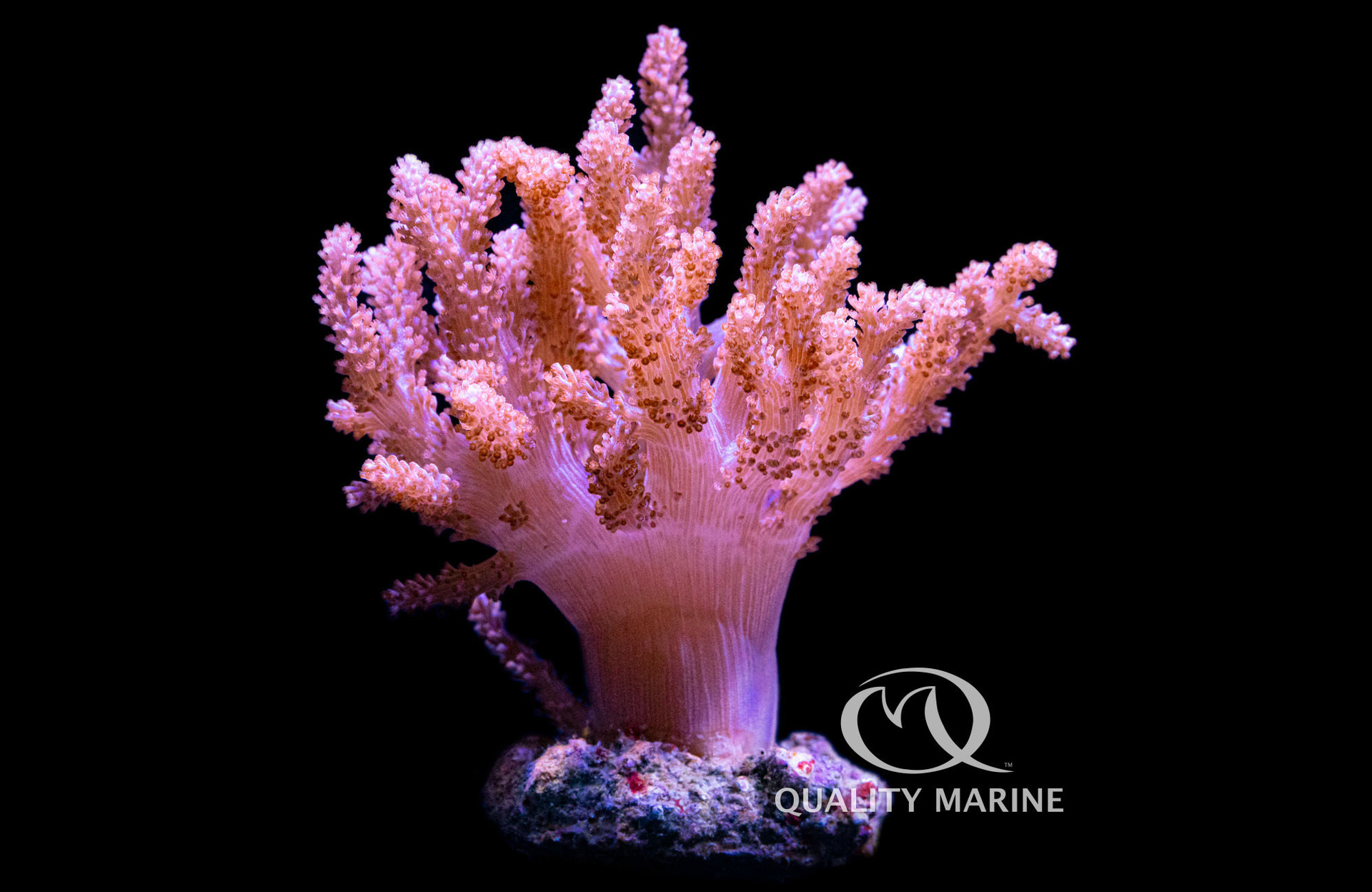Stuck on Softies - Kenya Tree

Kenya Tree was once also frequently called “Cauliflower Coral” or “Colt Coral.” What ever you call them, they have been an aquarium mainstay for countless good reasons. They are incredibly durable, grow quickly, easily reproduce, have a beautiful wavy form and sometimes are vividly colorful (and easily colorfast). What's not to like? Not much. The main knock on Kenya Tree is that it can grow “too fast” and overtake an aquarium, but like everything else in the hobby, a little regular maintenance can eliminate this nuisance.
In The Aquarium
Kenya Tree come in a variety of colors, from brilliant pink to neon green, to a soft off-white cream color. Once upon a time they were predominantly brown, and while that coloration is still available, the overwhelming majority of these coming in right now are maricultured and thus only the really beautiful ones are being targeted for reproduction. As a result, we are stocking less and less of the somewhat boring, once common colors. The most common question we get about the Kenya Trees is “will they keep that color?” and this is a topic we call “colorfastness.” Some corals will look brilliant in perfect captive conditions but will quickly turn brown at the first sign of any water quality variation. This is not the case with Kenya Tree, while all corals can change color with conditions, Kenya Trees are pretty colorfast. As with all coral, you are striving for consistency with all your parameters, but Capnella is a very tolerant species and can thrive in a wide variety off environments. The primary drivers behind keeping them pink or green are strong chemical filtration to curb chemical warfare between coral species. This is a must with most soft corals, especially when kept in mixed species tanks. The other major driver here is light, which must be high quality and reasonably bright.
Other tips for keeping Capnella genus corals include moderate to strong (non-laminar) flow. Keeping Nitrates and Phosphates in check will prevent the coral from having to compete with algae for nutrients and growing room. Lastly we should talk about food; while you can keep Capnella with nominal added food (especially in densely populated aquariums) they do much better, grow more quickly and retain a more robust, brilliant appearance if well fed. In house we use the Nutramar Live Algae Blends and they are amazing. We cannot recommend this product highly enough. When well fed and happy, Kenya Tree grows quickly and so planning a display around it is a great idea. Leave room for vertical and horizontal growth. Utilize their growth rate and good looks in a planned fashion and your aquarium display will be easier to maintain and look stunning to boot. If you combine it with other soft corals, make sure to choose contrasting colors and growth habits.
Biblio:
Resource Library Cleveland Metro Zoo, Resource Library. https://resourcelibrary.clemetzoo.com/Animal/1334. Accessed 15 September 2020.
Gibella Aquarium, J. C. Delbeek , June 1, 2020, https://www.gibellaquarium.us/natural-habitat/genus-capnella.html Accessed 21 September 2020
Borneman, Eric. 2001. Aquarium Corals: Selection, Husbandry, and Natural History. TFH Publishing.